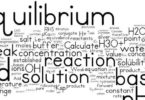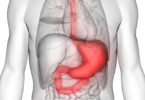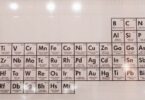MCQ on Enzymes:
Who first used the term “Enzyme”?
(a) J.B. Sumner
(b) Kuhne
(c) Thompson
(d) Garnier
Which of the following enzymes is an example of lyases?
(a) Aldolase
(b) Phosphohexoseisomerase
(c) 3 phosphoglyceraldehyde dehydrogenase
(d) Cytochrome oxidase
Enzymes with same function and different molecular structure are called
(a) Isomerases
(b) Zymases
(c) Isoenzymes
(d) Coenzymes
Enzyme present in saliva:
(a) Pepsin
(b) Amylase
(c) Lipase
(d) Trypsin
Which is true about enzymes?
(a) Lower the energy of activation of a reaction
(b) Make the equilibrium more favourable for the organism
(c) Lower the energy of product and increases the energy of reactant
(d) Are altered permanently in the reaction they catalyse
Which of the following is not a part of enzyme but is activates the enzyme?
(a) K
(b) Zn
(c) Mg
(d) Mn
Related: Chemical bonding and molecular structure question bank
The protein part of enzyme is known as
(a) Holoenzyme
(b) Apoenzyme
(c) Isoenzyme
(d) All of the above
Which mineral element is essential for the activity of enolase enzyme?
(a) Copper
(b) Cobalt
(c) Zinc
(d) Boron
Enzyme present in intestinal juice :
(a) Pepsin
(b) Trypsin
(c) Rennin
(d) Sucrase
Rennet enzyme was purified by
(a) S.A. Waksman
(b) A. Fleming
(c) Payen and Persoz
(d) Christian Hansen
Which one of the following is a coenzyme
(a) Nicotinamide
(b) Riboflavin
(c) Pantothenic acid
(d) All the above
Related: AP and GP aptitude questions
Acetyl CoA enzyme belongs to
(a) Synthetase
(b) Isomerase
(c) Desmolase
(d) Hydrolase
Enzymes exist in the cells as
(a) Solid
(b) Crystals
(c) Solution
(d) Colloid
Enzymes, vitamins and hormones have one thing in common
(a) All are synthesized in organism
(b) All are proteins
(c) All aid in regulating metabolism
(d) All enhance oxidative metabolism
In certain metabolic pathways, a number of enzymes are required. These multienzyme complexes occur enclosed in
(a) Membrane
(b) Area with in ATP
(c) Microbodies
(d) Endoplasmic reticulum.
Most of the biochemical reactions differ from those occurring in the non living world in
(a) Requiring energy
(b) Releasing energy
(c) Being enzymatic
(d) Being spontaneous
Related: Thermodynamics question paper
Which one of the following enzymes is inactivated by oxygen-
(a) Dehydrogenase
(b) Nitrogenase
(c) Phosphate
(d) Urease
An enzyme acts by
(a) Reducing the energy of activation
(b) Increasing the energy of activation
(c) Decreasing the pH
(d) Increasing the pH
Digestive enzymes breakdown complex molecules by :
(a) Oxidation
(b) Hydrolysis
(c) Reduction
(d) Conjugation
Saliva has the enzyme
(a) Pepsin
(b) Ptyalin (also known as Amylase)
(c) Lipase
(d) Gastrin
Cytochrome oxidase enzyme contains
(a) Magnesium
(b) Manganese
(c) Iron
(d) Cobalt
Related: Nuclear chemistry quiz
Which enzymes are used for converting corn starch into high fructose syrup?
(a) Glucoisomerase
(b) Glucoamylases
(c) Amylases
(d) All of these
How is the rate of enzyme catalysed reactions affected by every 100 C rise of temperature-
(a) Halves
(b) Becomes four times
(c) Doubles
(d) Remains unchanged
Enzyme can be made functionless by
(a) Removing its product as fast as fast it is formed
(b) Doubling its concentration
(c) Decreasing its concentration
(d) Blocking its active site
Rice or bread taste sweet on prologed chewing because of the breakdown of starch in them. The enzyme in the saliva which takes part in this reaction is
(a) Pepsin
(b) Renin
(c) Amylase
(d) Invertase
In the modern system of nomenclature which one of the following enzyme occupies Ist position
(a) Oxidoreductase
(b) Transferase
(c) Hydrolase
(d) Ligase
Related: quiz questions about Inventions
Enzymes which act on proteins
(a) Hydrolases
(b) Proteases
(c) Lipases
(d) Ligases
Zymogens are
(a) Enzyme acting upon starch
(b) Group of zymase enzymes
(c) Inactive enzyme precursors
(d) None of the above
Enzymes as they exist inside the cell are
(a) In solid form
(b) In crystalline form
(c) In colloidal form
(d) In solution form
Enzymes have a very narrow optima for
(a) Light
(b) Temperature
(c) pH
(d) Humidity
Enzymes catalysing hydrolytic reactions are called
(a) Hydrolases
(b) Desmolases
(c) Proteases
(d) Ligases
Related: Ratio and proportion aptitude questions with answers
Enzyme zymase converts
(a) Sugar into starch
(b) Starch into sugar
(c) Fructose into glucose
(d) Hexose into ethyl alcohol
Who demonstrated that alcoholic fermentation was an enzymatic process
(a) Louis Pasteur
(b) Justus Liebeg
(c) Edward Buchner
(d) James Sumner
Enzymes which convert starch into maltose is
(a) Maltase
(b) Diastase
(c) Invertase
(d) Hydrogenase
Most of the digestive enzymes belong to the class of
(a) Lyases
(b) Hydrolases
(c) Oxidoreductases
(d) Transferases.
Ptyalin is an enzyme produced in the
(a) salivary glands
(b) pituitary glands
(c) thyroid glands
(d) pancreas
Related: Nervous system quiz questions and answers
Which of the following enzymes convert starch to maltose ?
(a) Invertase
(b) Zymase
(c) Maltase
(d) Diastase
Acetyl CoA enzyme belongs to
(a) Synthetase
(b) Isomerase
(c) Desmolase
(d) Hydrolase
Synthesis of enzymes occurs in
(a) Lysosome
(b) Nucleolus
(c) Polysome
(d) Spherosome
Hydrogen is removed from a substrate with the help of enzyme
(a) Lipase
(b) Decarboxylase
(c) Protease
(d) Dehydrogenase
What enzymes do for a biochemical reaction
(a) Alter its rate
(b) Alter its pattern
(c) Alter both
(d) None of the above
Related: Redox reaction practice quiz
An enzyme extract when subjected to electric field separates into two fractions, each catalysing the same reaction. The fractions are
(a) Coenzyme
(b) Allosteric enzyme
(c) Isoenzyme
(d) Inducible enzyme
Molecular weight of enzyme is
(a) Less than 5000
(b) 5000 to 10000
(c) 10000 to 20000
(d) More than 40000
Most of the vitamins function as
(a) Holoenzyme
(b) Enzymes
(c) Hormones
(d) Coenzymes
Which of the following component of our food is digested by an enzyme which is present in saliva as well as in pancreatic juice?
(a) proteins
(b) fat
(c) minerals
(d) carbohydrate
The first enzyme to mix with food in the digestive tract is:
(a) pepsin
(b) cellulose
(c) amylase
(d) trypsin
Related: physics electrostatics test
In human digestive system, the enzymes pepsin and trypsin are secreted respectively by:
(a) pancreas and liver
(b) stomach and salivary glands
(c) pancreas and gall bladder
(d) stomach and pancreas
Amylases act on:
(a) Proteins
(b) Lipids
(c) Carbohydrates
(d) Vitamins
Inactive form of pepsin is
(a) Pepsinage
(b) Pepsinogen
(c) Peptidase
(d) All






